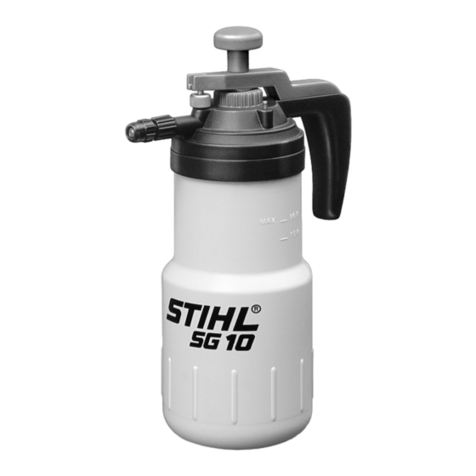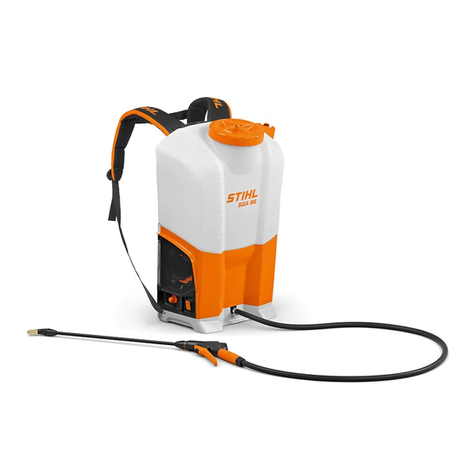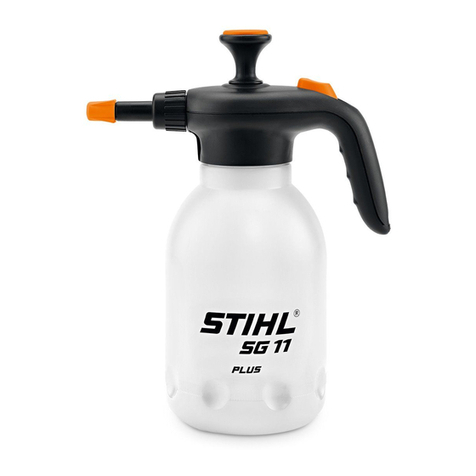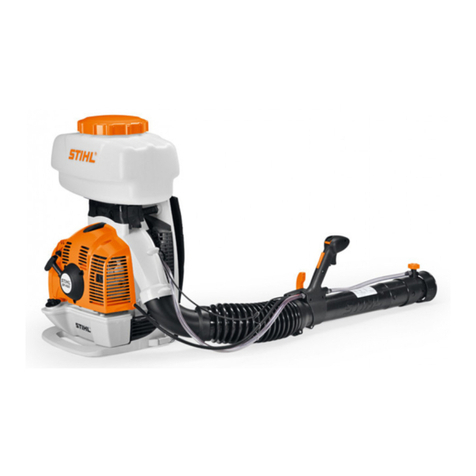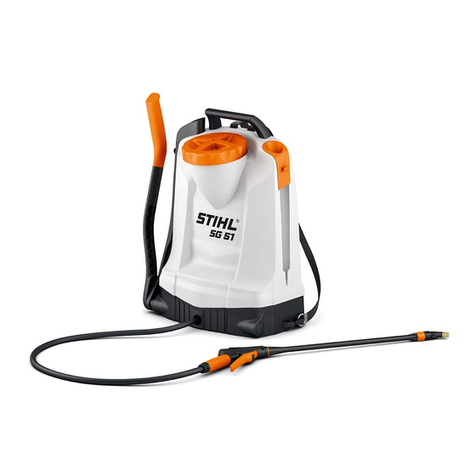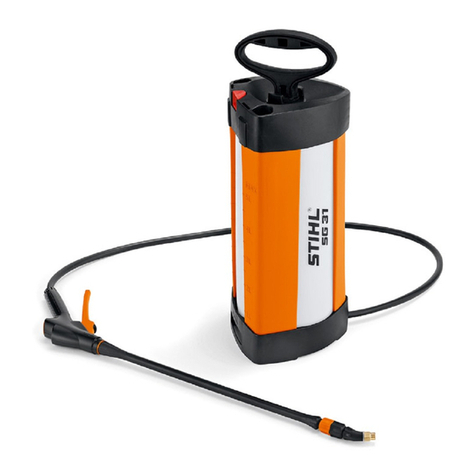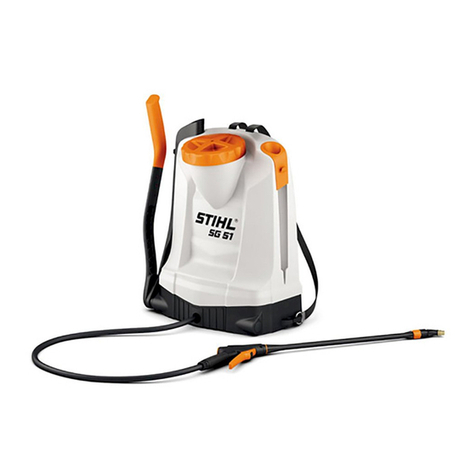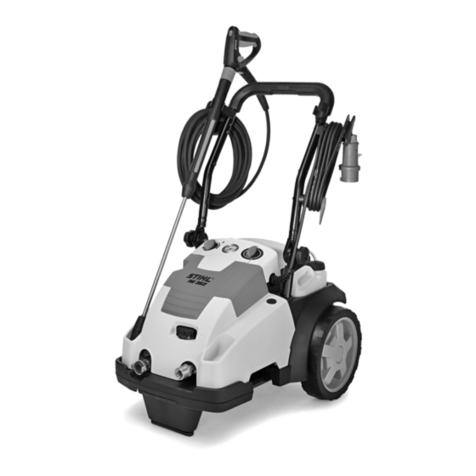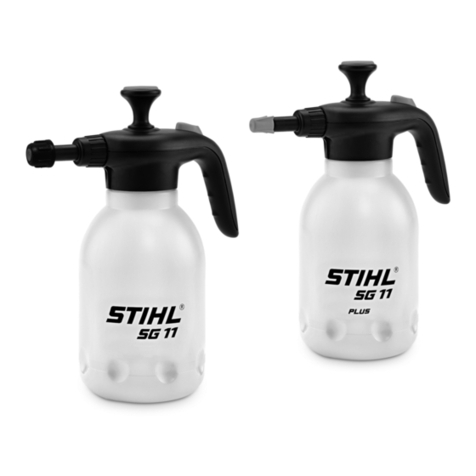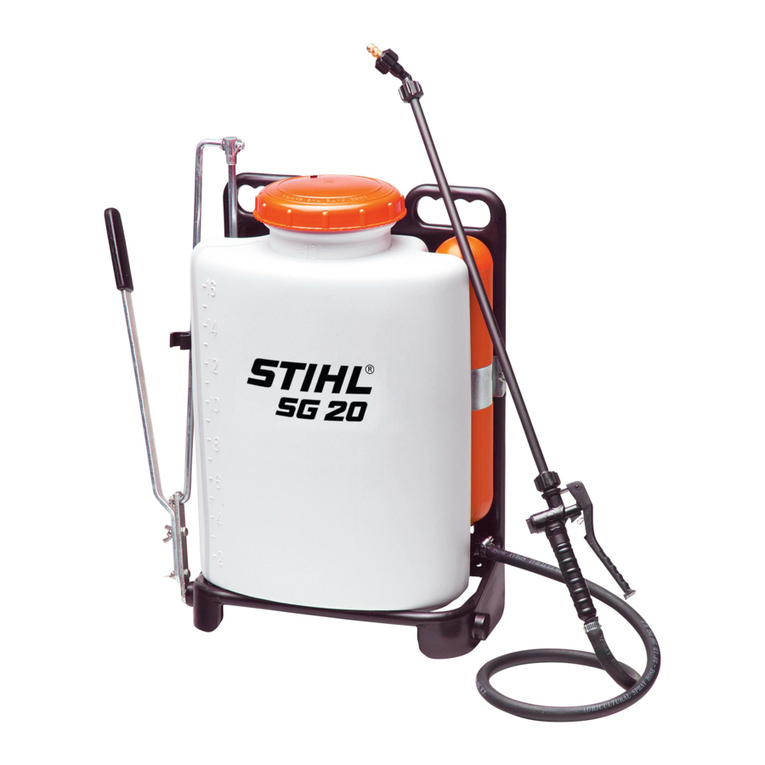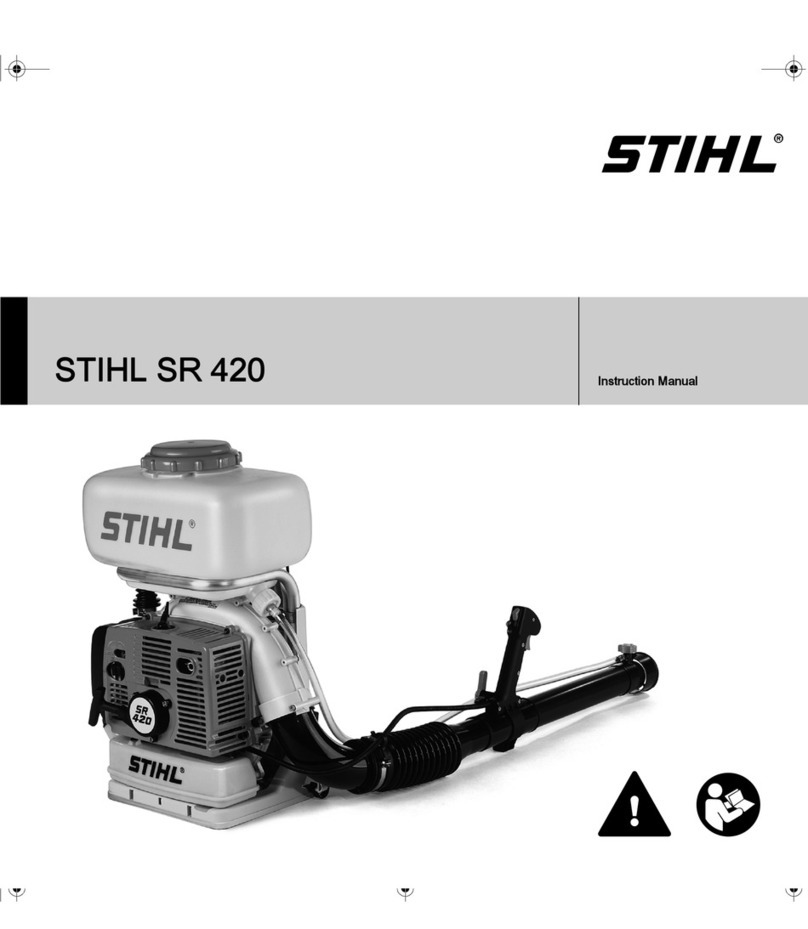
Never attempt to modify your tool in any way
since this may increase the risk of personal
injury. STIHL excludes all liability for personal
injury and damage to property caused while
using unauthorized attachments.
2.7 Handling Chemicals
Read the instructions supplied with the plant pro‐
tection chemical prior to use. Follow the instruc‐
tions with respect to mixing, using, personal pro‐
tection equipment, storage and disposal.
Observe legal requirements for handling plant
protection chemicals.
Plant protection chemicals may contain substan‐
ces that are harmful to humans, animals, plants
and the environment – risk of poisoning and risk
of serious or fatal injuries!
Avoid contact with plant protection chemicals.
Plant protection chemicals may be used only by
persons trained in their handling and the appro‐
priate first-aid measures.
Keep instructions or label of the plant protection
chemical available at all times in order to inform
the doctor about the chemical concerned in an
emergency. In an emergency, follow the chemi‐
cal manufacturer's instructions provided or on
the label. Observe manufacturer's safety data
sheets.
2.7.1 Mixing plant protection chemicals and
filling tank
Use plant protection chemicals only as specified
by the manufacturer.
–Before filling the tank with chemicals, carry out
a test with fresh water and check all parts of
the sprayer for leaks.
–Never apply undiluted liquid concentrates of
plant protection products.
–Mix the plant protection chemical and fill the
tank outdoors only or in well-ventilated loca‐
tions.
–Only mix sufficient solution for the job in hand
so that nothing is left over.
–Do not mix different plant protection products
unless such a mixture is approved by the man‐
ufacturer.
–Mix different chemicals only in accordance
with the manufacturer's instructions – incorrect
mixtures may produce toxic fumes or explo‐
sive solutions.
–Stand the sprayer on a level surface – do not
fill the tank above the maximum mark.
–When filling from central water supply, do not
immerse the end of the hose in the solution –
sudden low pressure in the system may cause
the solution to be sucked back into the water
supply.
–To reduce the risk of injury, do not fill the
sprayer while carrying it.
–Close the tank tightly after filling.
2.7.2 Application
–Work only in the open or in very well ventilated
locations, e.g. open greenhouses.
–Do not eat, drink or smoke while working with
plant control chemicals.
–Never blow through nozzles or other compo‐
nents by mouth.
–Do not spray in windy conditions.
Too high or too low a spray pressure or unfavor‐
able weather conditions can result in the wrong
solution concentration. Overdosing may damage
plants and the environment. Under-dosing may
result in unsuccessful plant treatment.
To reduce the risk of damage to plants and the
environment, do not operate the sprayer:
–if pressure is too high or too low
–in windy conditions
–at temperatures above 30 °C in the shade
–in direct sunlight
In order to reduce the risk of accidents and dam‐
age to the sprayer, never operate the sprayer
with:
–flammable liquids
–viscous or sticky liquids
–caustic or corrosive chemicals
–liquids hotter than 30 °C
2.7.3 Storage
–During work breaks, do not leave the sprayer
in the hot sun or near any heat source.
–Do not store plant protection chemical in the
sprayer for longer than one day.
–Store and transport plant protection products
only in approved containers.
–Never store the plant protection products in
containers intended for foods, drinks or animal
feed.
–Do not store plant protection products with
foods, drinks or animal feed.
–Keep plant protection products out of the
reach of children and animals.
–Store the sprayer empty and clean. It must not
be under pressure.
–Store plant protection products and power tool
in a place secured against unauthorized use.
English 2 Safety Precautions and Working Techniques
4 0458-583-0121-B







